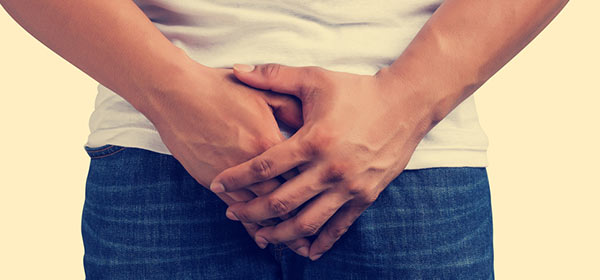There’s so much written about breast checks for women but, if you’re a man, checking your testicles is just as important. It’s vital to know how they feel normally, so you can react and seek advice on any changes you notice. We’re not suggesting you walk around with your hands constantly down your pants, so here’s how to carry out a regular check and some tips on what you should look out for.
Testicular self examination (TSE) shouldn’t be painful, so it’s important that you’re relaxed and that you use gentle hands.
Firstly, make sure your scrotum is warm and relaxed, consider doing the TSE check when you’ve just come out of the shower or bath.
You may also wish to do the TSE in front of a mirror, so you can see what you’re doing. Ensure that you can reach all parts, and check one testicle thoroughly before moving onto the other.
Support your scrotum with the palm of your hand and gently roll the first testicle between your thumb and fingers. Feel for any lumps or swelling and then move onto the second testicle. If there’s pain, try to be a little more gentle. If the pain persists, you should see your GP.
The testes should feel firm and smooth. Any lumps, swelling or abnormalities should be referred to your GP.
Next, feel along the bottom of the scrotum and locate the epididymis that sits at the back of the testicles. You should feel a small bunch of tightly curled tubes. If it feels loose or tender, then you should check with your GP
What’s normal?
As with breast, every man’s testicles will be different and it’s important to regularly check yours so you can quickly gauge what is normal and what is not. Generally though, healthy testicles:
- feel like a smooth, firm egg
- range in size from a small bird egg to a chicken egg
- one testicle can be bigger than the other
- often one testicle hangs lower than the other.
There should be no pain or discomfort in your testicles. If you feel pain, or your testicles become tender or you feel them particularly heavy, then it’s important that you don’t panic, but have them checked by your GP.
How regularly should I check?
As regularly as you wish! However, once a month is usually enough.
If I feel a lump, should I be worried?
There’s no denying that finding a lump or abnormality will set your mind racing, however, it’s important to note that the sooner you seek help, the better the outcome is likely to be. A lump doesn’t necessarily mean cancer, it could simply be a cyst. But if it is indicative of something more serious, bear in mind that testicular cancer is one of the most treatable forms of cancer.
To find out more about how to check your testicles, visit andrologyaustralia.org.au
Related articles:
I think it’s my hormones doc
Diagnosing an enlarged prostate
Cancer: what test to have and when to have them

